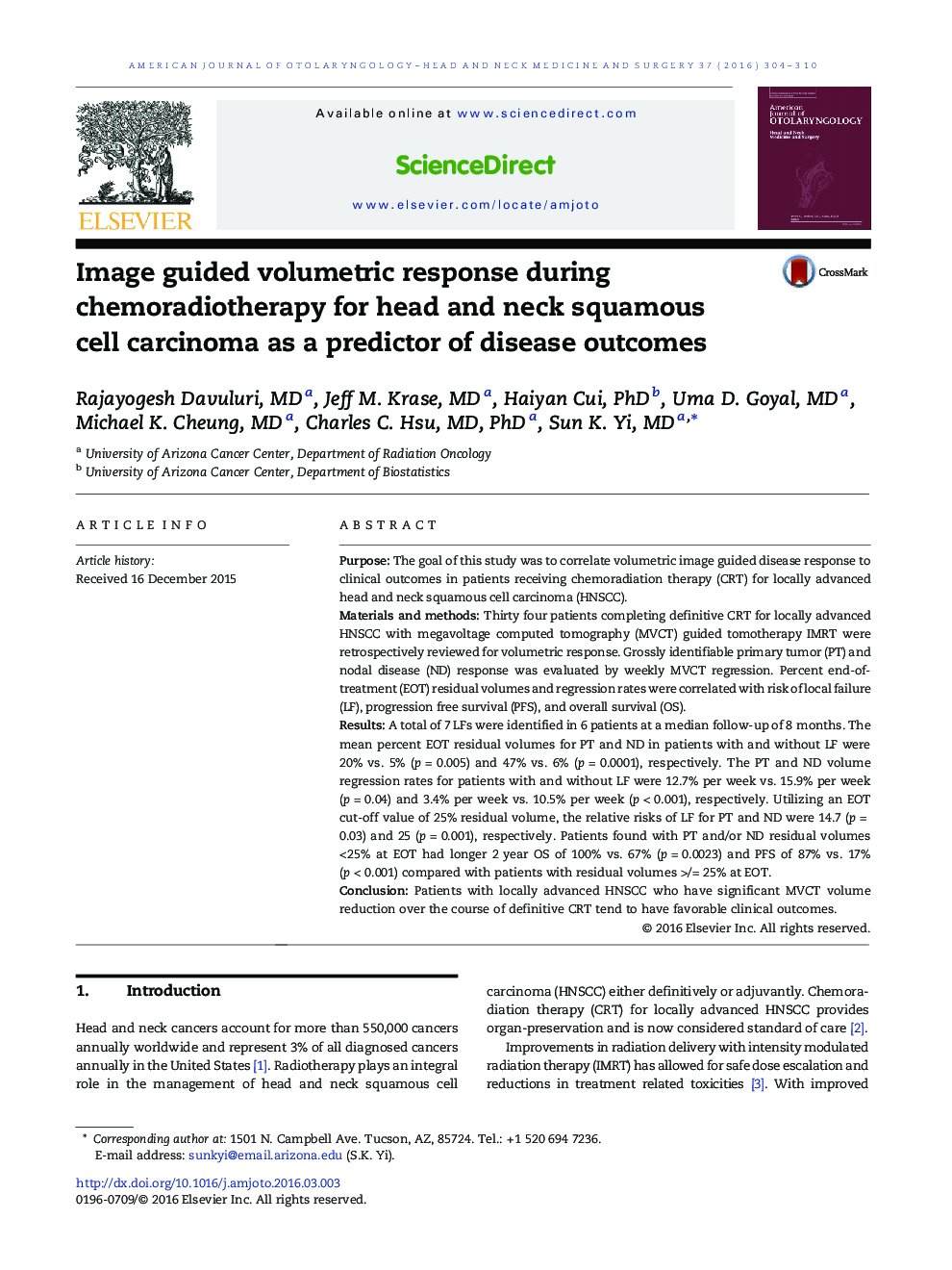| Article ID | Journal | Published Year | Pages | File Type |
|---|---|---|---|---|
| 4102913 | American Journal of Otolaryngology | 2016 | 7 Pages |
PurposeThe goal of this study was to correlate volumetric image guided disease response to clinical outcomes in patients receiving chemoradiation therapy (CRT) for locally advanced head and neck squamous cell carcinoma (HNSCC).Materials and methodsThirty four patients completing definitive CRT for locally advanced HNSCC with megavoltage computed tomography (MVCT) guided tomotherapy IMRT were retrospectively reviewed for volumetric response. Grossly identifiable primary tumor (PT) and nodal disease (ND) response was evaluated by weekly MVCT regression. Percent end-of-treatment (EOT) residual volumes and regression rates were correlated with risk of local failure (LF), progression free survival (PFS), and overall survival (OS).ResultsA total of 7 LFs were identified in 6 patients at a median follow-up of 8 months. The mean percent EOT residual volumes for PT and ND in patients with and without LF were 20% vs. 5% (p = 0.005) and 47% vs. 6% (p = 0.0001), respectively. The PT and ND volume regression rates for patients with and without LF were 12.7% per week vs. 15.9% per week (p = 0.04) and 3.4% per week vs. 10.5% per week (p < 0.001), respectively. Utilizing an EOT cut-off value of 25% residual volume, the relative risks of LF for PT and ND were 14.7 (p = 0.03) and 25 (p = 0.001), respectively. Patients found with PT and/or ND residual volumes < 25% at EOT had longer 2 year OS of 100% vs. 67% (p = 0.0023) and PFS of 87% vs. 17% (p < 0.001) compared with patients with residual volumes >/= 25% at EOT.ConclusionPatients with locally advanced HNSCC who have significant MVCT volume reduction over the course of definitive CRT tend to have favorable clinical outcomes.
